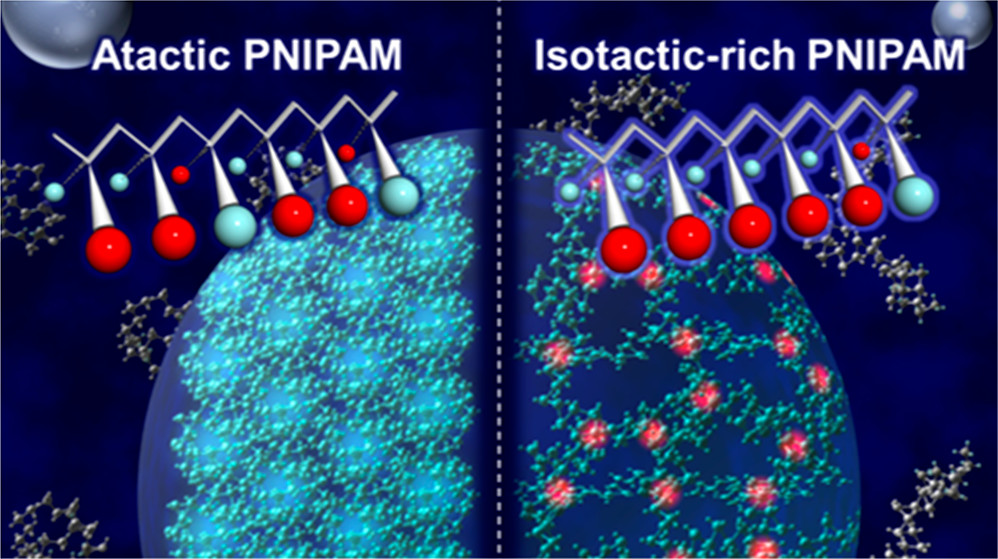- Microanalysis of Single Poly(N-isopropylacrylamide) Droplet Produced by an Optical Tweezer in Water: Isotacticity Dependence of Growth and Chemical Structure of the Drople
- Kenta Ushiro, Tatsuya Shoji*, Mitsuhiro Matsumoto, Taka-Aki Asoh, Hideo Horibe, Yukiteru Katsumoto, Yasuyuki Tsuboi*
- J. Phys. Chem. B, Vol. 124 (2020), 8454-8463.
- DOI: 10.1021/acs.jpcb.0c06932
- 雑誌のSupplementary Coverに採択!

Thermoresponsive phase separation mechanisms of aqueous poly(N-isopropylacrylamide) (PNIPAM) solutions were investigated using an optical tweezer combined with a Raman microspectroscope. A near-infrared laser beam (λ = 1064 nm) was focused into the solution to produce and trap a single polymer microdroplet under an optical microscope. The laser beam played two important roles: The first role is to locally heat the solution to induce phase separation in which numerous polymer microdroplets are generated around the focus, while the second one is to collect these microdroplets. Eventually, a single polymer droplet was stably produced and trapped at the focus. Our method enabled us to perform two types of microanalysis for the droplet. Analysis I is real-time monitoring the growth of the polymer droplets by which we can determine the growth rate of droplets. Analysis II is Raman microspectroscopy to reveal chemical components of the droplets. By means of these two analyses, we revealed important phase separation mechanisms in terms of stereoregularity (isotacticity) dependence. From analysis I, we show that droplet growth is governed by the Ostwald ripening mechanism and the growth is accelerated by increasing the isotacticity. From analysis II, we show that the gelation is promoted in the droplet (physical gel formation) with increasing isotacticity. Our technique should be a versatile tool to explore liquid–liquid phase separation mechanisms for various binary solution systems.
https://pubs.acs.org/doi/10.1021/acs.jpcb.0c06932